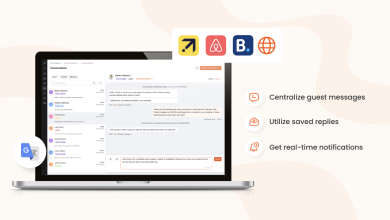Competitor-Based Pricing for Properties: Boost Bookings and Profits

Do you want to have an advantage over your competitors? Setting the right price for your rooms can be the key factor that makes potential guests choose your property over theirs.
As you keep in mind the ever-changing market conditions and the fluctuating nature of the economy, competitor-based pricing becomes a must for your property. With this blog, learn the benefits of this strategy and actionable steps to implement it effectively, ensuring your property stands out in a competitive market.
What is competitor-based pricing?
Competitor-based pricing is one of the strategies you can use to set the prices of your rooms and other amenities. Simply put, this strategy involves setting your prices based on what your competitors are charging.
Adjusting your pricing accordingly can be the thing that sets you apart from your competitors. It is not just about the pricing; you can keep the competition alive and attract new guests to your property. Let your unique amenities shine and set you apart.
Advantages of competitor-based pricing
Competitor-based pricing is not the only way to create a pricing strategy but it offers multiple advantages. This approach allows you to strategically position yourself to maximize your profit. Here’s how competitor-based pricing does this:
Low risk: By using competitor-based pricing you take the market data and adjust your prices accordingly. This minimizes the risk of setting your rates way below or above the market and losing profit.
Effective: With competitor-based pricing, you actively determine your market position. By setting your price at a level that differentiates you from competitors and attracts travelers, you create an effective and appealing pricing strategy.
Lucrative: Finding the optimal price leads to increased revenue. Maintaining your competitive edge not only attracts new guests but also encourages repeat visits, ensuring they choose your property time and again.
What is an example of competitor-based pricing?
If competitor-based pricing is hard for you to wrap your head around here is an example that can help you:
You are Property A and you want to set a rate for your double room. So you go ahead and look up the room rates of your competitors. For Saturday they offer:
- Property B $150 per night
- Property C $140 per night
- Property D $135 per night
You are a highly-rated property, you have a unique selling point and you offer breakfast, unlike these three properties. By setting your price to $145 you can position yourself in a desirable position in the eyes of your potential guests. This pricing strategy not only makes you competitive but also highlights the added value you offer compared to the other three properties.
How does rate parity affect competitor-based pricing?
Rate parity is a pricing strategy just like competitor-based pricing. It ensures your room rates are balanced and controlled across distribution channels. Rate parity ensures that your rates are consistent in all sales channels while remaining competitive which is beneficial for both properties and OTAs. These two pricing strategies can go hand in hand if they are combined.
Instead of juggling different rates across various sales channels, you can concentrate on staying competitive with your pricing. A channel manager is the key to ensuring rate consistency across all platforms. With HotelRunner Channel Manager’s real-time updates and seamless channel management, you can effortlessly maintain parity while optimizing your revenue potential.
How to build a competitor-based pricing strategy
Creating a competitor-based pricing strategy takes careful thought and effort, but by breaking it down into three key steps, the process becomes more manageable:
1. Find your competitors
Start by doing market research, and figure out who the key players that could be your competitors are. These competitors could be properties in your area and around the same size as you are. You could also analyze what your indirect competitors such as bigger or smaller properties offer to their guests as well.
To find them you can use different OTAs or metasearch platforms like Expedia, Booking.com, Agoda, trivago, and Google. Additionally, platforms like Instagram can provide insights into what your competitors are doing and how they engage with their audience.
2. Make a list of the average rates
Once you’ve identified your competitors, create a list of their prices. Visit their websites and check OTAs to see their room rates. This will give you a clear picture of how they price their rooms.
3. Set your prices accordingly
The next step is to figure out your position among your competitors. Calculate the average price and aim to make your pricing more enticing than theirs. As long as your price covers costs and brings in profit, you could set it slightly lower than your competitors or offer more value for a higher price.
Conclusion
Don’t waste your time by checking the prices of each competitor on multiple OTAs and repeating this manual process continuously. What you need is a tool that can do it for you.
With HotelRunner Competition Analysis leverage real-time market insights to fine-tune your pricing strategy and stay profitable. This way you can ensure rate parity, and save time and cost. Sign up today and learn how to position yourself accurately in the market.



